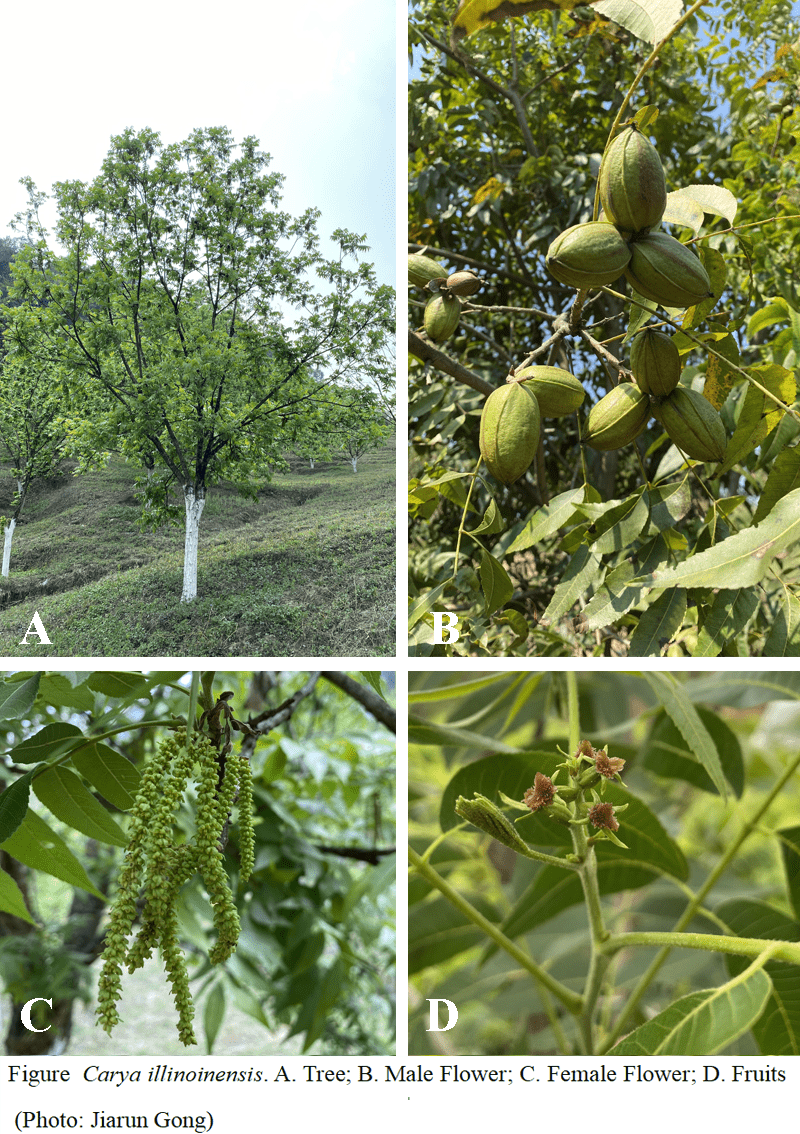
Pecan, a nut-bearing deciduous tree, is native to North America and is widely cultivated globally for its valuable nuts and timber. Known for its thin shells and high-quality kernels, pecans are a rich source of healthy fats, proteins, and essential nutrients. This species has become one of the most economically important nut trees worldwide, owing to its versatile applications in food and industry. Pecan wood is also prized for its strength and durability, making it a preferred choice for furniture, flooring, and other timber products.
Currently, pecan cultivation spans over 20 countries across five continents, including the United States, Canada, Brazil, Mexico, Argentina, South Africa, Israel, and parts of Asia and Europe. Its adaptability to various climates and its resilience have made it a globally preferred species for commercial and ecological purposes. In China, pecans have been introduced and cultivated for over a century, particularly in subtropical regions near the Yangtze River, where the climate and soil conditions are conducive to their growth.
Pecan trees exhibit longevity and high productivity under optimal growing conditions. Advances in breeding and cultivation techniques aim to enhance disease resistance, improve nut yield, and support sustainable cultivation practices. This makes the pecan tree a critical resource for agricultural economies and a contributor to global food security and forestry industries.
Download DataData summary
Available data is consolidated and visually presented for clarity
Choromsome number
Estimated genome size
Total assembly
Longest scaffold
Number of scaffolds
N50 scaffold length
Protein-coding genes
Repeat sequence
Expression Atlas
Presenting the expression profiles of genes access various organ and/or development stages in an intuitive and approachable manner.
JBrowse
An interactive genome browser for exploring and visualizing genomic data through a graphical interface.
BLAST+
Identifies regions of similarity between nucleotide or protein sequences, compassing input sequences to a databases to reveal matches and functional insights.